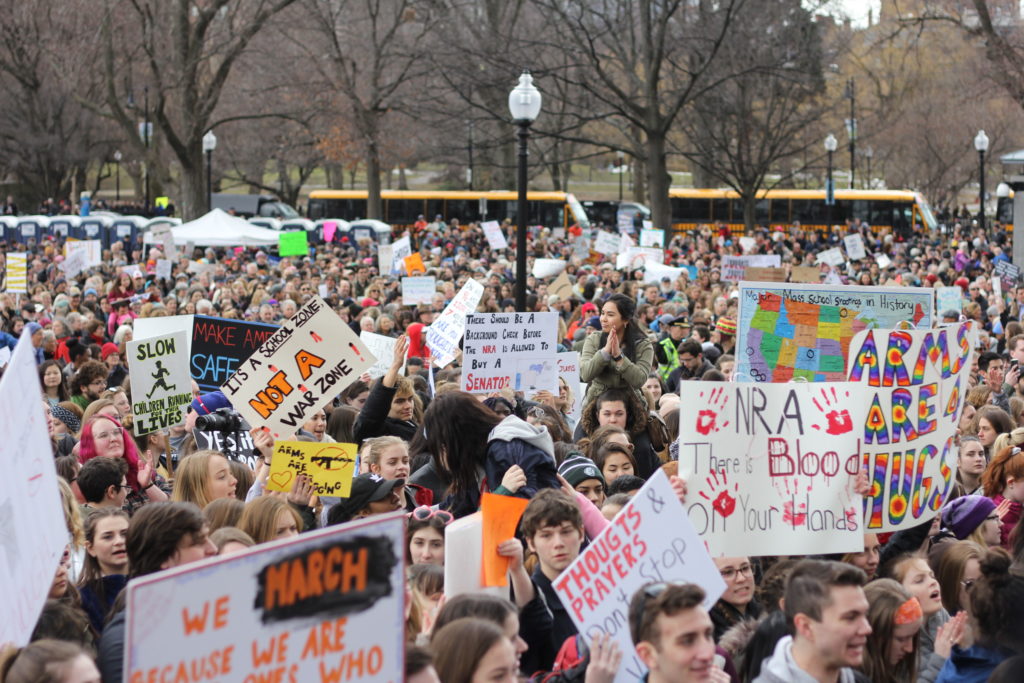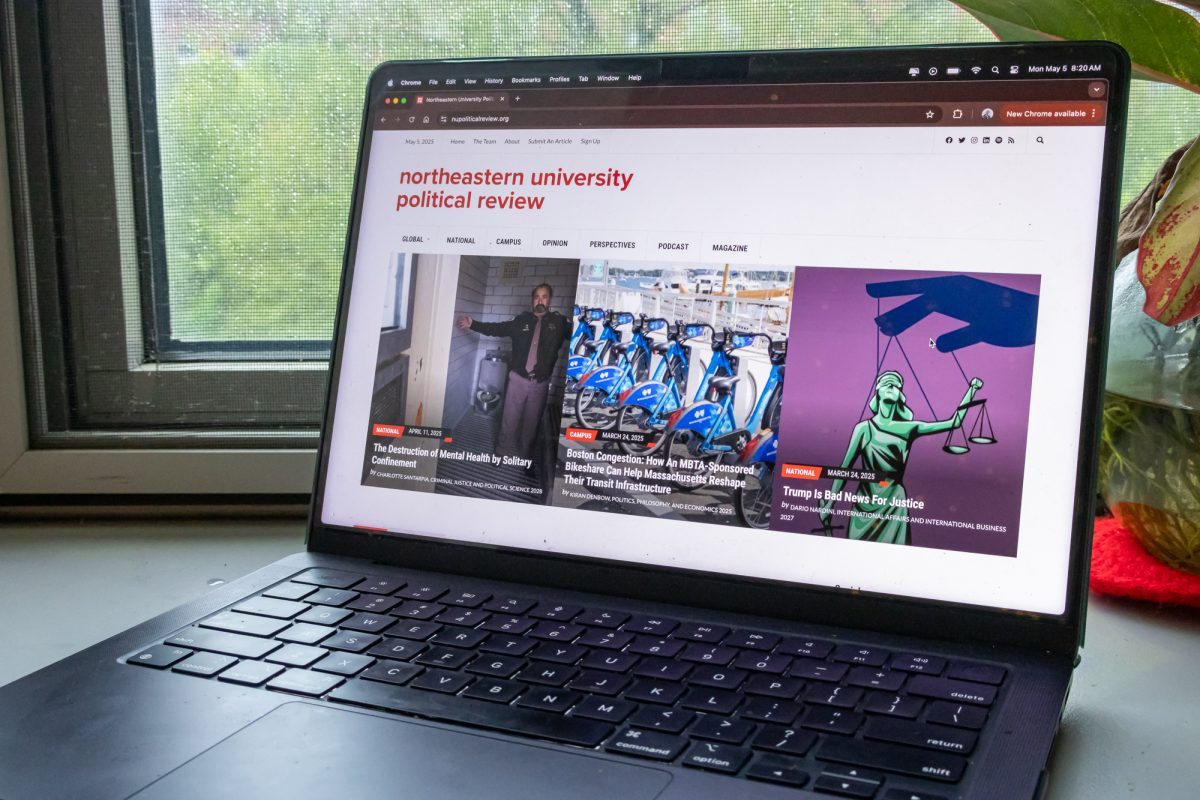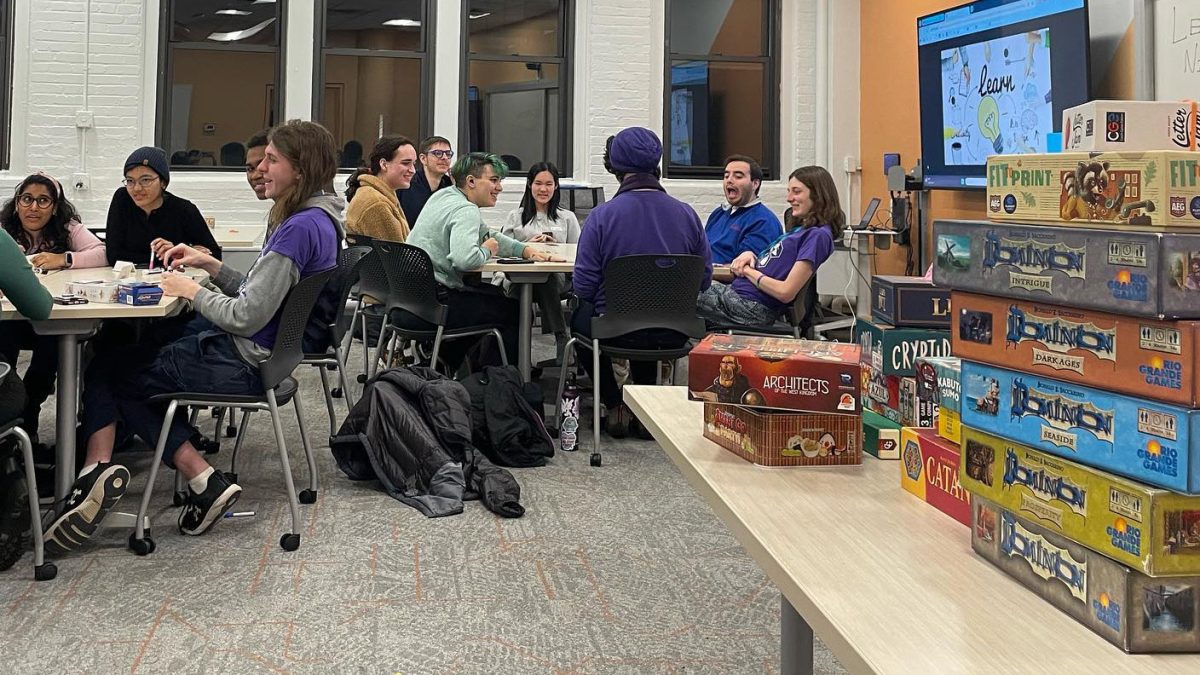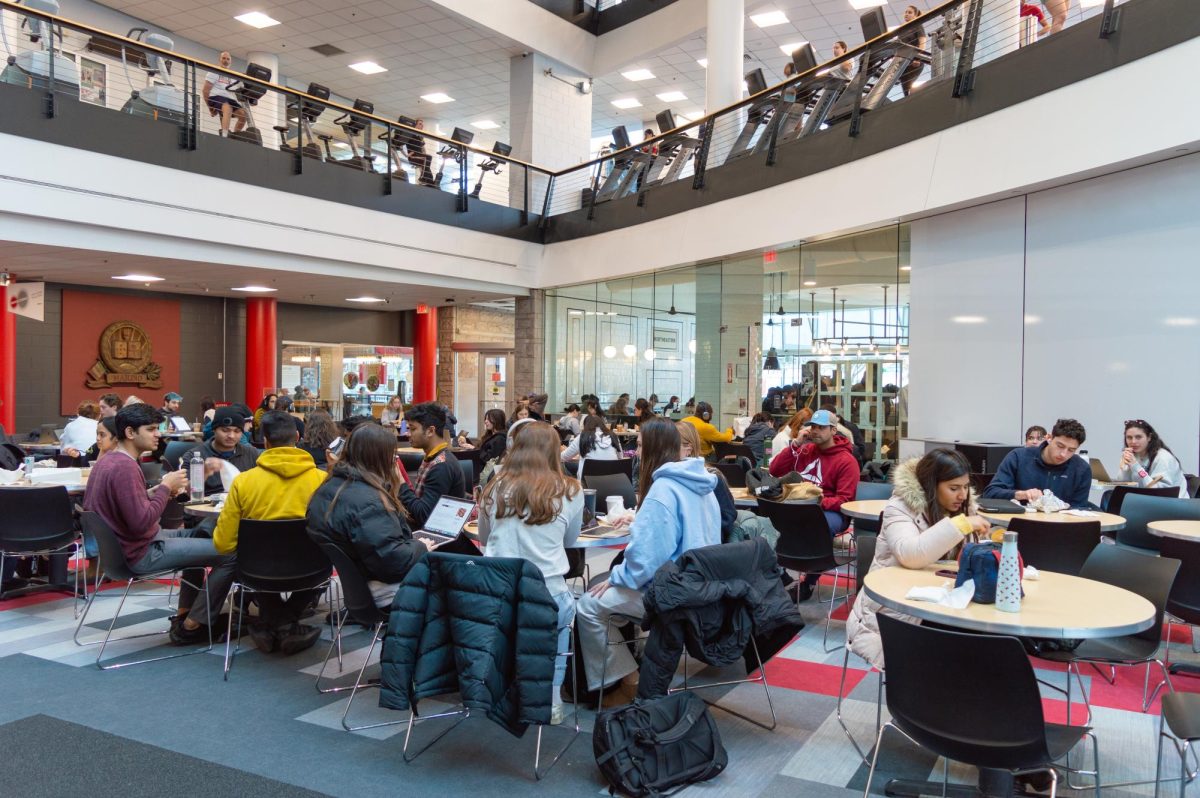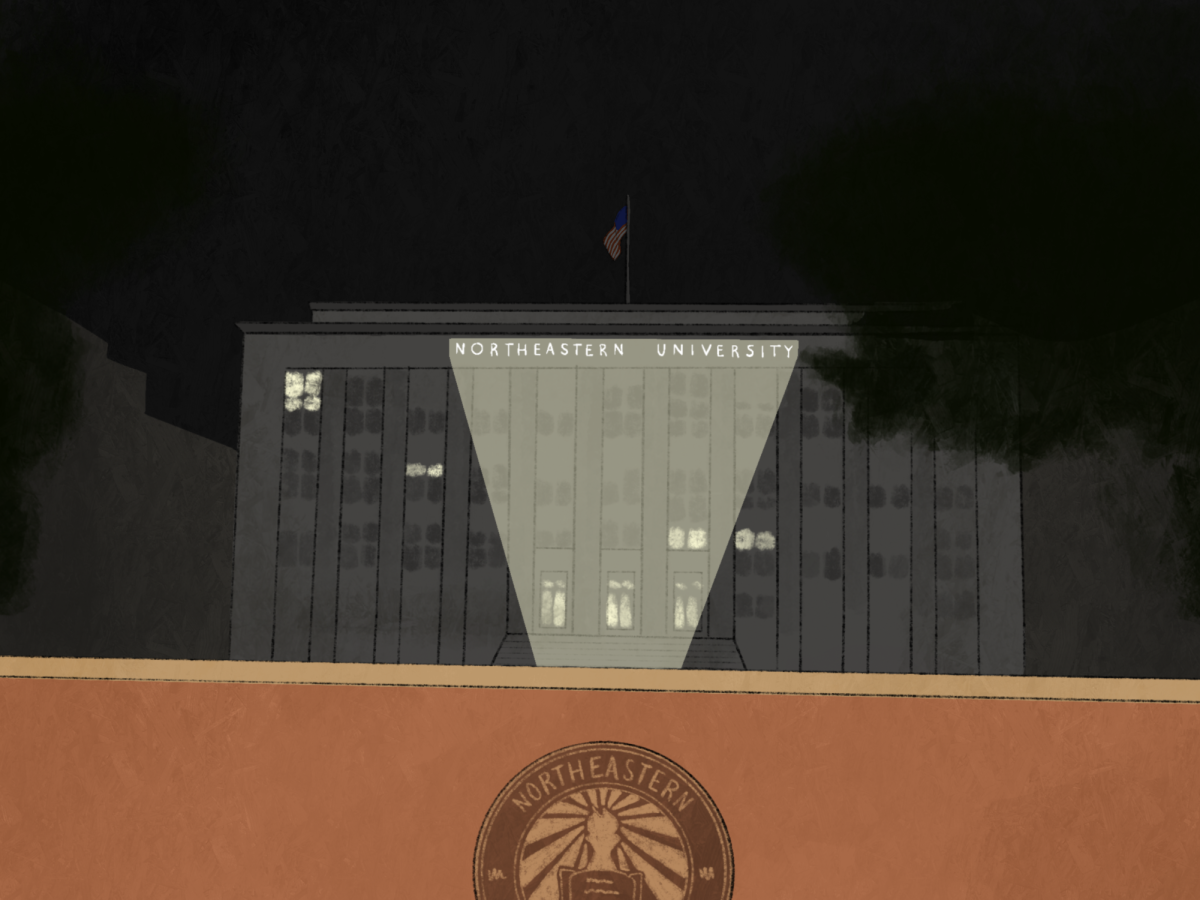Thousands converge in Boston for ‘March for Our Lives’
March 24, 2018
Students, teachers, parents and other concerned citizens gathered in the thousands on Boston Common Saturday to protest gun violence and call for new gun restrictions nationwide.
Protesters convened early Saturday morning at Madison Park Vocational Technical High School in Roxbury, then marched together up Columbus Avenue, through part of Northeastern’s campus and toward the Boston Common. There, speakers told personal stories and argued for gun regulations as the crowd mourned victims of gun violence and cheered this generation of youth’s drive to create change.
Among those leading the march were Beca and Leonor Muñoz, two residents of Parkland, Florida, the site of the school shooting that reignited the national gun debate and spurred a wave of student activism that fueled Saturday’s march. Beca Muñoz is a second-year at Northeastern and Leonor Muñoz attends Marjory Stoneman Douglas High School, where 17 people died Feb. 14. Leonor Muñoz was present the day of the shooting and was not injured.
“I will always remember every single detail,” Leonor Muñoz said from the stage at the Common. “My trauma isn’t going away.”
Her sister joined her, the two speaking in unison: “And neither are we.”
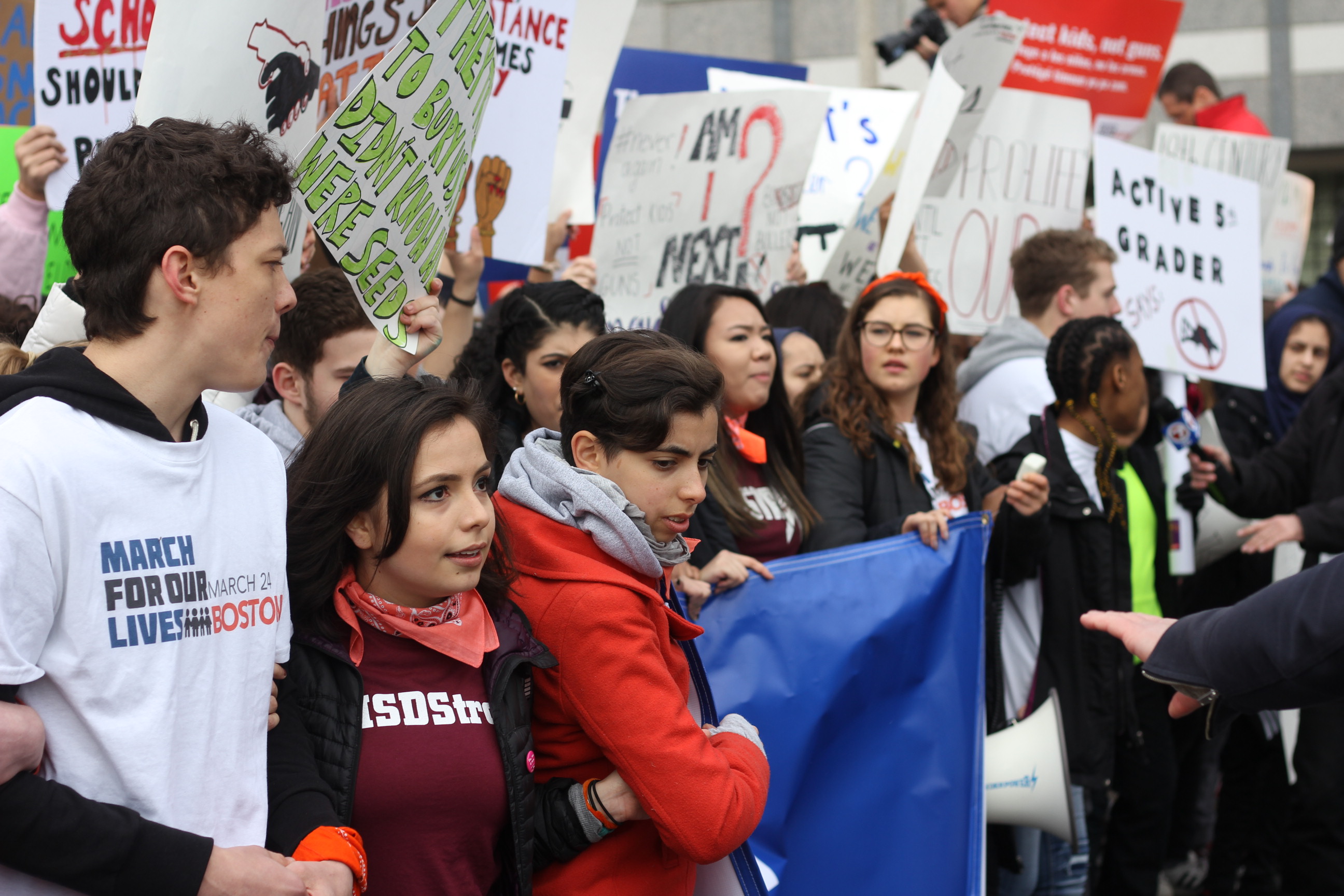
Thousands of student marchers filed into the Common through the thousands who were already gathered and many adults cheered in admiration for the young, outspoken activists that have seized the national discourse since the shooting.
The masses chanted throughout the two-hour march as well as at the Common: “This is what democracy looks like,” “The NRA has got to go,” “Not one more.”
The rally was somewhere between furious and exuberant; leaders on stage and the crowds of youth alternated from voicing their anger at the lack of gun control legislation to expressing their enthusiasm toward being part of the change and taking matters into their own hands.
The crowd listened as the Muñoz sisters took turns belting into the microphone a narration of their experience on Feb. 14.
“I remember the terror of hearing, ‘Code Red! Run!’” Leonor Muñoz said.
“I remember seeing a text from my sister saying, ‘School shooter. Do not call.’” Beca Muñoz said.
“I remember falling apart the next day when my dad knocked on my door,” Leonor Muñoz said, “because I thought it was happening again.”
Next on stage was a rebuke of President Donald J. Trump and other conservatives’ proposal to solve the school-shooting epidemic by arming teachers. Graciela Mohamedi, a teacher from Rockland, Massachusetts, and a veteran of the U.S. Marine Corps decried the idea.
“I remember the day that I was handed my M16A2 service rifle,” Mohamedi said. “I remember the mixed feelings that that brought. Fear, and a dizzying sense of power, because in my hands I held life and death.”
Mohamedi said assault rifles — like the ones used in Parkland, Newtown, Las Vegas and Orlando — are meant for war and have no place in the general American public.
“We’ve seen them used in places like Iraq, and Sandy Hook Elementary,” Mohamedi said. “Syria, and Pulse nightclub. Afghanistan, and Marjory Stoneman Douglas High School.”
Mohamedi said even experienced, trained shooters shouldn’t be armed in classrooms.
“I’m one of those teachers that our president believes should be armed,” she said. “As a vet, I can tell you that a handgun in the hands of an untrained, overworked teacher will not be an effective measure to prevent these mass shootings.”
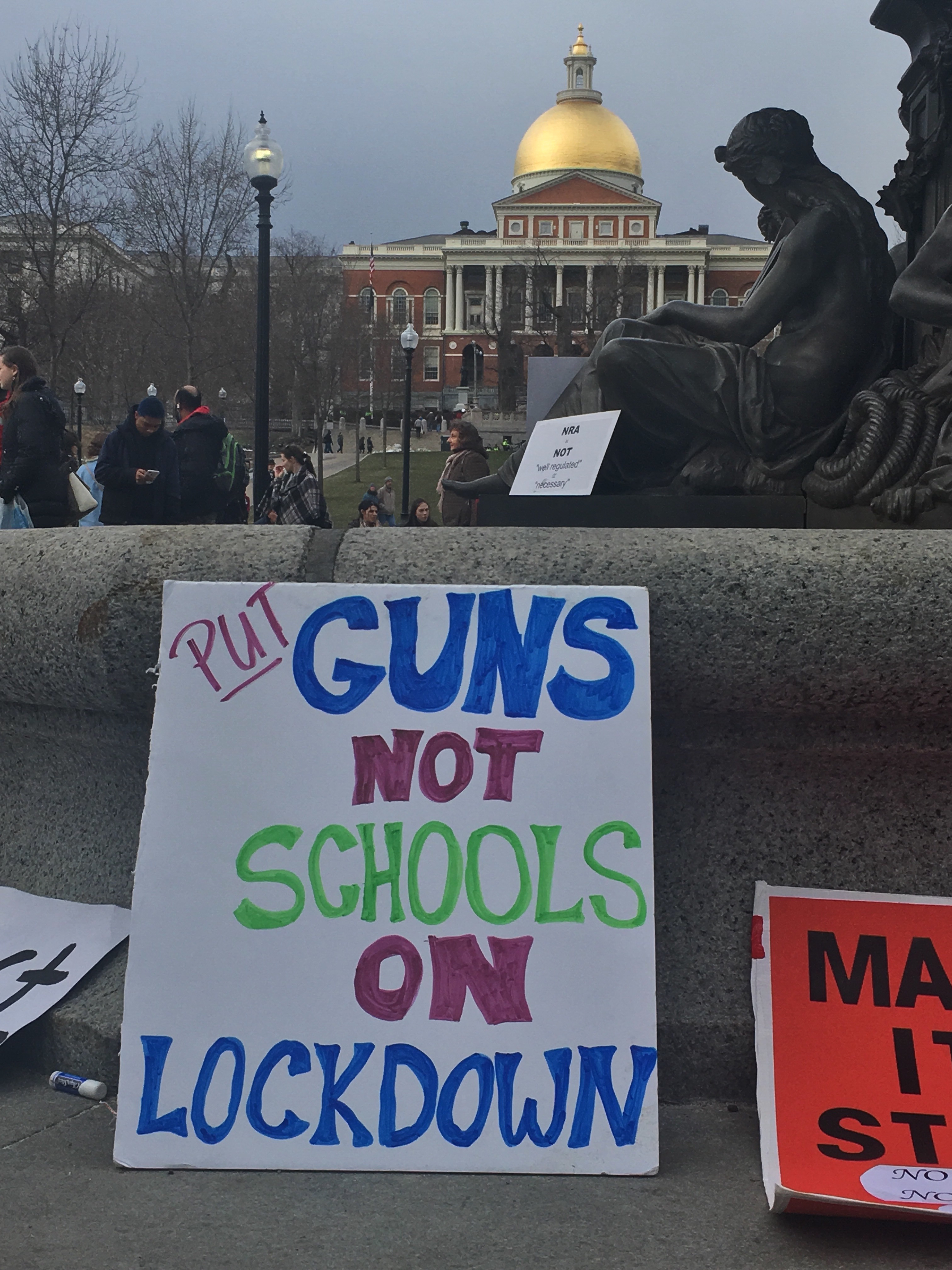
Jon Streff, a teacher who attended the march, agreed that arming teachers is a bad idea.
“Having more guns in schools? Arming teachers is absolutely ridiculous,” Streff said. “It’s a stupid idea. We’re there to protect the kids, but also to educate them as well. And a firearm in the classroom does the complete opposite.”
A June 2017 study, which surveyed roughly 4,000 people on carrying firearms in public places, was conducted by a team of researchers including Matthew Miller, a professor in the Bouvé College of Health Sciences at Northeastern.
The study found that of the various public venues considered, support for carrying guns in schools was the lowest, at 19 percent, below restaurants, bars and sports stadiums among other venues. The study included an oversampling, which is a correction for bias, of veterans and gun owners to ensure a complete sampling of public opinion.
Young activists speak out
Among the most outspoken members of the crowd were the students, who came out to call attention to the fear they experience in school. Four students from Dover-Sherborn High School in Dover, Massachusetts, made plans to attend the march weeks ago because they were eager for a chance to speak out against gun violence.
Claire Gorden, a high school sophomore, said she and many of her classmates were shocked by the Parkland shooting.
“If everything went perfectly, there would be no need for automatic weapons,” Gorden said, upset with her political representatives for not protecting students. “They’re treating us worse than animals.”
Sam Litle, also a sophomore at Dover-Sherborn, said he has always been an advocate for gun control and that it is vital for preventing future shootings.
“I think it’s our responsibility to show our politicians what we want and need from them,” Litle said.
Another sophomore, Grace Birmingham, said she isn’t marching for her own safety, but for the safety of those younger than her. In a few years, the students marching will have graduated from high school before the effects of potential widespread gun control take place.
“I don’t think much will change, honestly, by the time we graduate,” Birmingham said. “But, we’re here for the next generation.”
Sophomore Katie Hennessey said she was amazed by the kindness of other marchers throughout the day, even during the packed train ride to Boston.
“People were offering to pay for our tickets and food,” Hennessey said. “We didn’t let them, but it was a really nice offer.”
When a volunteer from the Massachusetts secretary of state’s office walked by and asked the group to pre-register to vote, they were quick to sign up — hoping to make their voices heard.
Joe Guptill, a 19-year-old student at Endicott College in Beverly, Massachusetts, said he attended the march so he could send his future kids to school “and know that they’re not going to die.”
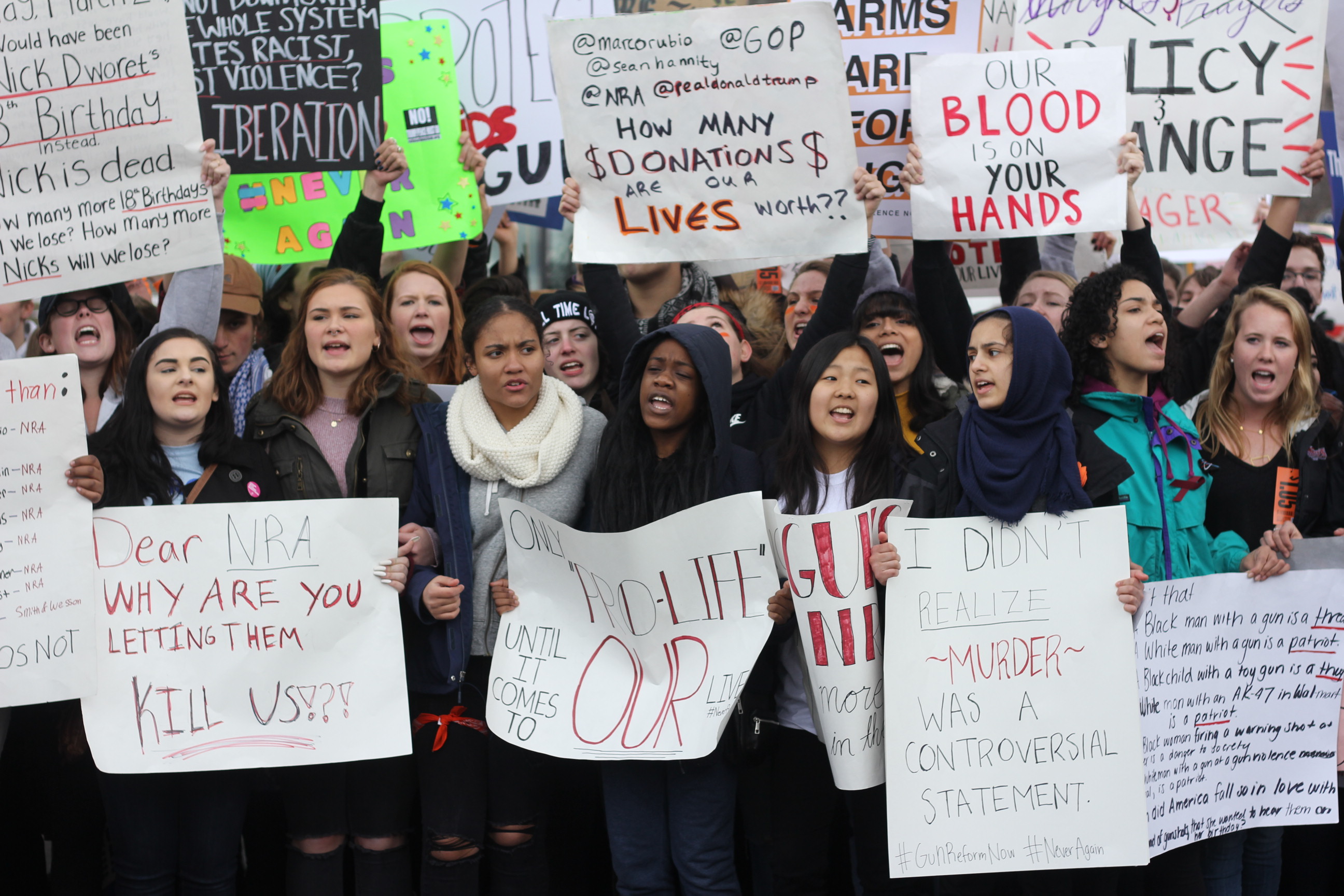
Adults want change for students
Many adult onlookers, like Lynn Bishop of Arlington, Massachusetts, were inspired by the show of activism and resolve of the students.
“I’m here to support the kids organizing this. This is awesome,” Bishop, 54, said. “I feel more hope now than I have in years. The power of the kids spread across the country gives us hope.”
Inga Hartman and her son, Max Milner, a fifth-grade student, came to the march from their home in Salem, Massachusetts. Milner was surprised to see many young people his age also come out to protest and he’s hopeful that his peers’ outrage will inspire change.
“I’m hoping for stricter gun laws and no assault weapons,” Milner said.
Hartman reiterated her son’s hope for change, addressing her concern over easy access to assault weapons.
“Even in a state like Massachusetts, we are vulnerable because anyone can buy guns elsewhere and bring them across state borders,” Hartman said. Massachusetts had the lowest firearm mortality rate of any U.S. state at 242 gun deaths in 2016, according to the Centers for Disease Control.
Milner stood on a grass ledge holding a sign advocating for gun control as people walked by the path in front of him.
“It’s nice to be a part of the change,” Milner said.
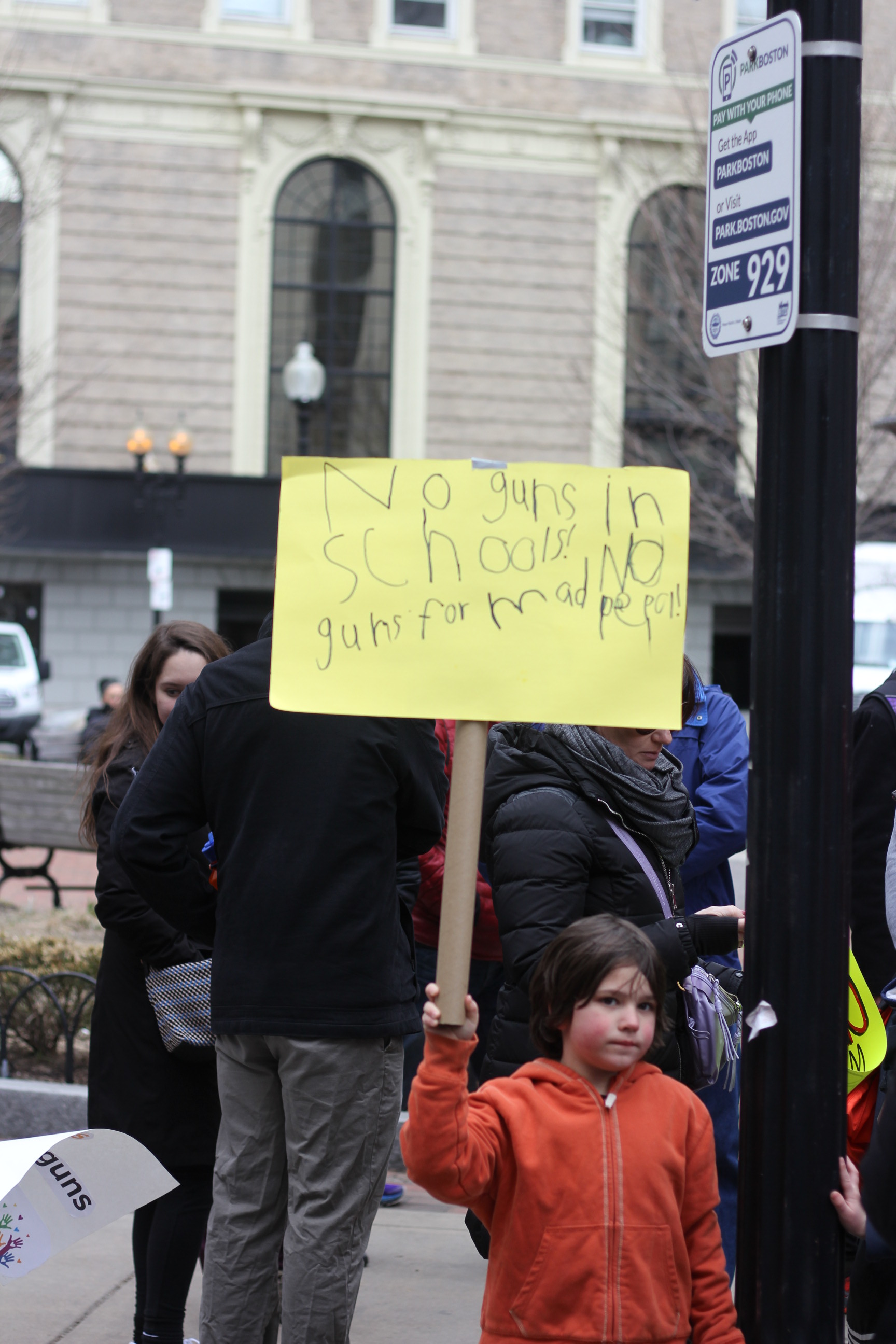
Julie Glovin, a Stowe, Mass. resident, and her daughter stood at the back of the rally, listening to the speakers. Glovin was inspired to attend the rally because of static gun laws over the years her children have been in school, despite numerous school shootings.
“Republicans need to know that there are people out there saying that enough is enough,” Glovin said.
When Glovin’s daughters were younger, she once stumbled upon them reenacting an active shooter school lockdown drill.
“They were playing lockdown when they were in kindergarten and in the six years since nothing has changed,” Glovin said.
Erin Kate O’Donnell, a mother of two from Braintree, Massachusetts, echoed the frustrations of many signs that were carried throughout the day.
“Somebody’s right to own semi-automatic weapons ends at my right to live, your right to live, at the safety of my children who should, at ages 5 and 8, not know what a lockdown drill is all about,” O’Donnell said.
A call to vote
Many at the Common took to condemning Congress for their inaction, imploring people to vote against NRA-aligned lawmakers in November’s midterm elections. “Vote them out” was a frequent chant, and while the event wasn’t officially political, there was a strong desire to vote out Republican members of Congress.
“I love that as I came in here, there were people registering voters,” said Heather Fowles, 54, of the Greater Boston area. “We have to take our country back with the vote.”
Stoneman Douglas graduate Lauren Siegel, a 33-year-old from Jamaica Plain donning a “Never Again” pin and “#MSStrong” sweatshirt, marched with a group of 40 or so fellow graduates.
“A bunch of us got together because we are hoping to amplify the voices of the students who are calling for change on gun control,” Siegel said. “I think we need to think about who we are putting in Congress with our midterm elections coming up and ensuring that our leaders are supporting students and kids and keeping guns off of the streets.”
Jack Torres, an organizer and spokesperson for the event, said he was inspired by the turnout during the march down Columbus Avenue.
“It doesn’t end today,” said Torres, a 15-year-old student at Somerville High School. “We’re going back to the State House to lobby and this continues at the polls.”

Susan Meyer, 70, said the first political event she attended ended with President John F. Kennedy’s assassination. Meyer, no stranger to the shock that accompanies a public shooting, said she was there for the kids and was concerned about her own grandchildren.
“We’re concerned about the problem government we’ve got now,” Meyer said.
Betsy Allen, a 71-year-old from Fairhaven, Massachusetts, recalled the civil rights movement of the 20th century.
“I am from much further south, and during [the] civil rights [movement] I went out with friends to demonstrate,” Allen said. “It’s really important for people to speak up. And not to stop. It’s most important that the laws are changed. And it’s really important to vote.”
Kim Odom marched in memory of her son, Stephen Odom, who was shot and killed when he was walking home from school Oct. 4, 2007. He was 13.
“It’s important for me to be here today because Stephen’s not here physically. I’m his voice,” Odom said.
Odom carried a sign that read “Never forget Stephen P. Odom” and encouraged people to act now before any more children die.
“As his mother, I didn’t realize at the time, and Stephen didn’t either, that gun violence is a public health issue,” Odom said.
The march passed several Northeastern residence halls and ISEC. / Video by Charlie Wolfson
Suicide is not to be forgotten
Despite the sheer tragedy of mass shootings, 62 percent of all gun deaths in the United States are suicides, according to the Centers for Disease Control. Gun suicide attempts are lethal because they occur quickly without time for medical aid, unlike other methods. In fact, 85 percent of gun suicide attempts are lethal according to the Gun Violence Policy Center.
Many at the march recognized that mass shootings are not the only source of gun violence, but that suicide is a problem exacerbated by guns, too. Alice Tilton, Adam Johnson and Margaret Tilton marched in honor of their family member, George Tilton, who died by suicide in November 2017. They advocated for an Extreme Risk Protection Order bill that would allow guns to be taken from people who are at particular risk of harming themselves or others.
“We believe that if he didn’t have such easy access to a firearm, he might still be alive today,” Alice Tilton said. “He was very ill and if there was a measure in place that allowed his mental health care provider or family members to alert the authorities that he shouldn’t have a gun, he wouldn’t have had it.”
One of the rally’s speakers, Reed Shafer-Ray, told a similar story. His friend died by suicide using a gun, and Shafer-Ray, a Harvard student, said he would be alive today if he hadn’t had access to firearms. He said a local gun store wouldn’t stop selling guns to his friend, despite the man’s family asking them to stop for his safety.
“With access to guns,” Shafer-Ray said, “it was only a matter of time.”
A Nor’easter for change
The sea of protesters who were filled with anger at the state of the nation’s gun violence, from the chants they shouted to the signs they carried, cheered Mohamedi’s powerful speech about guns and education.
“The opposition is going to call you ‘snowflakes,’” Mohamedi said. “But do you know what we, in Massachusetts, call this many snowflakes that are all riding on a wind of change? We call you a blizzard.”
Students were allotted space at the front of the crowd. / Video by Charlie Wolfson
Claire Wallace, Soule Coram and Nick Hirano contributed to this story.


